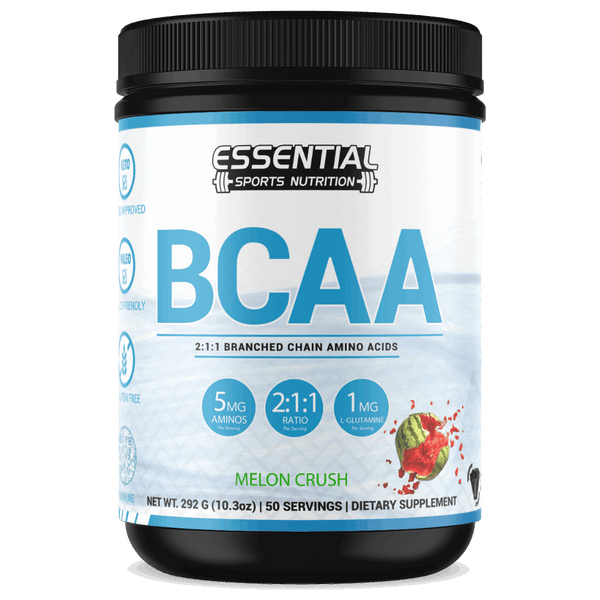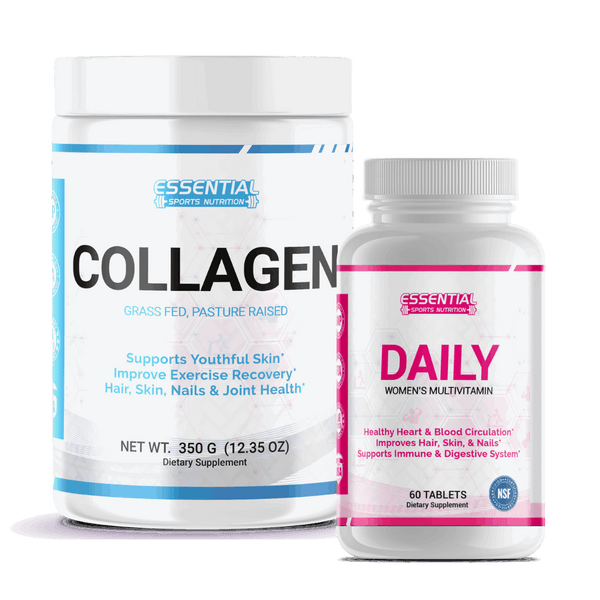Get Sleeveless-Ready: Arm Toning Moves to Rock Your Confidence
To tone your arms, focus on targeted exercises that enhance muscle definition and strength. Start with arm circles to activate your deltoids and improve shoulder mobility. Incorporate shoulder presses with dumbbells or resistance bands to build upper-arm muscles. Tricep dips and bicep curls are essential for isolating and strengthening specific muscle groups. Push-ups, especially variations like diamond push-ups, effectively engage arm muscles and offer thorough toning. Complement these with forearm planks to stabilize your core and bolster overall endurance. Each exercise plays an important role in achieving finely toned arms, increasing both aesthetic appeal and functional strength. Take the next steps for a detailed workout plan.

Key Takeaways
- Incorporate bicep curls and tricep dips to target and tone arm muscles effectively.
- Perform arm circles and shoulder presses to strengthen and define shoulders and upper arms.
- Use push-up variations to engage different arm muscle groups and enhance overall arm strength.
- Consistently practice forearm planks to stabilize the core and support arm toning exercises.
- Gradually increase the intensity and duration of exercises to improve muscle endurance and definition.
Arm Circles
Executing arm circles is a straightforward yet potent exercise that precisely targets the shoulder muscles, deltoids, and upper back. By integrating arm circles into your arm exercises, you can greatly enhance shoulder mobility, stability, and overall arm strength. Arm circles can be performed with or without weights, allowing you to adjust the intensity based on your fitness level.
To begin, stand with your feet shoulder-width apart and extend your arms parallel to the floor. Engage your shoulder blades to stabilize your upper back. Start with small circular motions, gradually increasing the diameter of the circles. Rotating your arms forward engages the front deltoids and upper chest. Conversely, rotating them backward more effectively targets the rear deltoids and upper back muscles.
Incorporate both forward and backward movements to ensure a balanced workout. This dual-direction approach helps in toning and sculpting your arms over time. Additionally, using light weights can add resistance, making the exercise more challenging and advantageous. Whether you're a beginner or an advanced fitness enthusiast, arm circles are a versatile addition to your arm exercises that yield impressive results.
Shoulder Presses

Following the dynamic benefits of arm circles, shoulder presses offer a more intense workout that specifically targets the deltoid muscles, enhancing both strength and definition in the upper arms. When you incorporate shoulder presses into your routine, you engage the deltoids, triceps, and upper back, making it a highly effective compound exercise.
Using dumbbells for shoulder presses allows for a greater range of motion and helps correct any muscle imbalances. Proper form is essential to avoid injury and maximize effectiveness. Begin by standing with feet shoulder-width apart, holding a dumbbell in each hand at shoulder height. Press the weights upward until your arms are fully extended, then lower them back to the starting position.
Consider these benefits of shoulder presses:
- Improved shoulder stability, which aids in better posture and reduces the risk of shoulder injuries.
- Enhanced upper body strength, contributing to overall physical performance.
- Versatility in exercise, as they can be performed with dumbbells, a barbell, or resistance bands.
- Increased muscle definition, particularly in the shoulders and upper arms.
Regularly incorporating shoulder presses into your workout routine will significantly increase upper body strength and muscle tone.
Tricep Dips
Tricep dips are an essential bodyweight exercise that effectively engages the triceps, shoulders, and chest muscles, making them indispensable for an advanced arm-toning regimen. To perform tricep dips, you can utilize a bench, chair, or parallel bars, which offer difficulty and range of motion flexibility.
Begin by positioning your hands shoulder-width apart on the edge of a bench or chair, with your legs extended forward and feet firmly planted. Lower your body by bending your elbows to a 90-degree angle, keeping your back close to the bench. Push through your palms to return to the starting position, ensuring your elbows are fully extended. Proper form is vital here: avoid flaring your elbows outward to minimize shoulder strain and maximize tricep engagement.
For added resistance and enhanced muscle activation, you can place a weight plate on your lap. This modification increases the load on your triceps, chest muscles, and shoulders, contributing to improved arm strength and definition. Consistent practice of tricep dips can greatly enhance your upper body endurance, making them a cornerstone of any thorough arm-toning program. By focusing on technique and gradually increasing resistance, you'll achieve noticeable improvements in muscle tone and overall arm aesthetics.
Bicep Curls

After mastering tricep dips, shift your focus to bicep curls, a fundamental exercise targeting the bicep brachii to enhance arm strength and definition. Bicep curls are essential for building the front of your upper arms and can be performed with dumbbells, resistance bands, or machines. When executed correctly, they isolate the biceps, ensuring effective muscle engagement and growth.
To perform a bicep curl, stand with your feet shoulder-width apart and hold a dumbbell in each hand with your palms facing forward. Keep your elbows close to your torso and curl the weights while contracting your biceps. Avoid swinging your body or moving your elbows forward.
Key points for effective bicep curls include:
- Form: Maintain a straight back and avoid using momentum to lift the weights.
- Breathing: Exhale while lifting the weights and inhale while lowering them.
- Variations: Incorporate hammer curls or concentration curls to target different bicep areas.
- Consistency: Regularly include bicep curls in your workout routine for improved arm definition and strength.
Remember to work your chest and back to maintain a balanced upper body. Proper form is essential to avoid injury and maximize the exercise's effectiveness.
Push-Ups
To maximize the benefits of push-ups, focus on maintaining proper form with a straight body line from head to heels, which guarantees muscle engagement and injury prevention. Explore variations like narrow push-ups for the triceps and wide push-ups for the chest to target specific arm areas. Avoid common mistakes such as flared elbows or sagging hips to enhance effectiveness and safety.
Proper Form Essentials
When performing push-ups, make sure you maintain a straight line from your head to your heels to engage your core effectively and prevent lower back strain. Start by placing your palms facing down directly under your shoulders with your fingers spread wide. This setup distributes your weight evenly, reducing wrist discomfort. As you lower your body, keep your elbows at a 90-degree angle. Focus on engaging your chest and triceps.
To maintain stability, squeeze your glutes and tighten your core. This prevents your hips from sagging and avoids overarching your lower back. Proper alignment ensures the exercise targets the intended muscle groups without causing injury.
Remember to breathe correctly. Exhale as you push up, and inhale as you lower down. This optimizes oxygen flow and energy.
For ideal form:
- Palms facing: Make sure hands are directly under the shoulders.
- Keep your elbows: Maintain a 90-degree angle during the descent.
- Engage core: Tighten core muscles to support your spine.
- Squeeze glutes: Prevents hip sag and maintains alignment.
Precision in your push-up form maximizes effectiveness and minimizes the risk of injury.
Variations and Progressions
Building on the foundation of proper form, exploring variations and progressions in push-ups can greatly enhance muscle engagement and overall strength. Start progressing from standard to narrow push-ups to target and tone your triceps effectively. This adjustment in hand placement focuses the workload on your triceps, providing more defined muscle activation.
Introduce a stability challenge by performing push-ups on an unstable surface, such as a stability ball or Bosu ball. This variation engages your core and recruits smaller stabilizing muscles in your arms and shoulders, enhancing overall functional strength.
For increased intensity, incorporate plyometric push-ups. By explosively pushing yourself off the ground and clapping your hands before descending, you activate fast-twitch muscle fibers, which are pivotal for power development.
Different hand placements, like diamond push-ups or staggered push-ups, shift the emphasis to various parts of your arms and chest. Diamond push-ups, where your hands form a diamond shape under your chest, heavily target the triceps, while staggered push-ups provide asymmetrical loading, challenging unilateral strength.
Gradually increasing your reps and sets ensures continuous muscle adaptation and growth. You'll enhance your arm strength and overall fitness by systematically applying these variations and progressions.
Common Mistakes Explained
Many individuals unknowingly commit common mistakes during push-ups, compromising the exercise's effectiveness and increasing the risk of injury. Addressing these errors is vital to achieving the best results and preventing harm.
Firstly, ensure your starting position is correct: your body should form a straight line from head to heels, with your palms facing down and placed directly under your shoulders. Avoid arching your back, as this can lead to lower back pain and reduce the exercise's efficiency.
Common mistakes include:
- Hand Placement: Placing your hands too wide or too narrow can strain your shoulders and wrists. Aim for shoulder width apart.
- Hips Positioning: Allowing your hips to sag or lift too high shifts the focus away from your arms and core. Maintain a neutral spine.
- Core Engagement: Not engaging your core muscles can lead to poor form. Tighten your abdominal muscles throughout the movement.
- Pace and Control: Rushing through push-ups without proper control and a full range of motion hinders muscle activation. Slowly lower your body until your chest nearly touches the floor, then push back up with controlled movements.
Forearm Planks
Proper plank form is important when performing forearm planks to maximize core muscle engagement and prevent injury. Ensure your body forms a straight line from head to heels, with elbows directly under your shoulders. To optimize results, gradually increase plank duration, starting with shorter intervals and progressively extending the hold time.
Proper Plank Form
Position your elbows directly beneath your shoulders to achieve peak form in a forearm plank, guaranteeing structural alignment and stability. This fundamental step ensures that your body weight is evenly distributed, minimizing undue stress on your shoulder joints.
Next, it's critical to engage your core muscles by pulling your belly button towards your spine. This activation stabilizes your midsection, providing a solid foundation for the exercise. Maintaining proper form in a forearm plank involves more than just core engagement. Your body should form a straight line from your head to your heels. Avoid any sagging or arching, as these deviations can lead to lower back strain and reduced effectiveness of the exercise.
Key points for maintaining proper plank form:
- Elbow Position: Keep elbows directly beneath shoulders.
- Core Engagement: Pull belly button towards spine.
- Body Alignment: Maintain a straight line from head to heels.
- Breathing: Focus on deep, even breaths to support stability and endurance.
Hold the forearm plank for at least 30 seconds, gradually increasing the duration as your strength improves. Deep, even breathing not only aids in maintaining stability but also enhances overall endurance, allowing you to hold the position longer and with better form.
Core Muscle Engagement
Engaging your core muscles during forearm planks primarily targets the rectus abdominis, transverse abdominis, and obliques, which are essential for maintaining proper posture and spinal alignment. When you adopt the plank position, ensure your elbows are directly beneath your shoulders and your body forms a straight line from head to heels. This ideal alignment is essential for effective core muscle engagement.
Forearm planks don't just work the superficial muscles; they activate deep core muscles, promoting better functional movement patterns. By sustaining the plank position, you're enhancing the stability and balance of your entire kinetic chain. The rectus abdominis helps in flexing the spine, while the transverse abdominis acts as a natural corset, stabilizing the spine and pelvis. The obliques, on the other hand, are important for rotational movements and lateral stability.
Consistent practice of forearm planks results in significant core strength and endurance. This increased core muscle engagement translates into improved performance in various physical activities and reduces the risk of injuries. By focusing on these core muscles, you not only improve your posture but also ensure efficient movement mechanics, which are critical for daily activities and athletic performance.
Plank Duration Tips
Start by aiming to hold a forearm plank for at least 30 seconds, ensuring your body maintains a straight line from head to heels. This foundational position is important in targeting Bat Wings and strengthening your upper body. Lower your chest slightly to avoid sagging, and engage your core to maintain stability and alignment.
To build endurance and strength effectively, consider these expert tips:
- Consistency is Key: Practice daily to increase your plank duration progressively. Start with 30 seconds and work up to 1-2 minutes.
- Proper Form: Always maintain a straight line, avoiding any arching of the back. This helps engage your core and glutes effectively.
- Breathing Techniques: Inhale through your nose and exhale through your mouth. Proper breathing can help you sustain the plank longer.
- Incorporate Variations: Challenge yourself with side planks or mountain climbers to target different muscle groups and prevent plateauing.
Resistance Band Workouts

Why are resistance band workouts a game-changer for toning and strengthening your arms? The key lies in the thorough tension they provide, ensuring that your muscles are engaged throughout the entire range of motion. To maximize the benefits, make sure you incorporate targeted exercises that isolate specific arm muscles. For instance, performing a one-arm bicep curl with a resistance band can intensely focus on your biceps, promoting hypertrophy and definition.
Resistance band workouts are not only effective but also versatile. You can easily adjust the resistance level by selecting different bands, allowing progressive overload to challenge your muscles continuously. This adaptability makes resistance bands suitable for all fitness levels, from beginners to advanced athletes.
Resistance bands' portability and affordability make them ideal for home workouts or traveling. You don't need bulky equipment to achieve a thorough arm workout. Exercises like tricep extensions, shoulder presses, and lateral raises can seamlessly integrate into your routine to enhance overall arm strength, endurance, and muscle definition.
Incorporating resistance band exercises regularly will yield significant improvements in arm muscle tone and functional strength over time. This method sculpts your arms and enhances their endurance and resilience.
Conclusion

Incorporating arm circles, shoulder presses, tricep dips, bicep curls, push-ups, forearm planks, and resistance band workouts into your routine will effectively target and tone your arm muscles. Remember, consistency is key—think of it as the "8-track" of fitness: timeless and reliable. Employ each exercise with proper form and controlled movements to maximize hypertrophy and minimize injury risk. Your dedication will yield sculpted, strong arms, showcasing your commitment to physical excellence.
Get Toned Arms and Best Arm Exercises FAQs
Q: What are the best arm exercises to tone arms?
A: Some of the best arm exercises to tone arms include bicep curls, tricep dips, push-ups, and shoulder presses using dumbbells.
Q: How can I get toned arms at home without weights?
A: There are many ways to tone your arms at home without weights, such as doing bodyweight exercises such as push-ups, tricep dips, and planks.
Q: Will arm exercises help me build muscle in my upper body?
A: Yes, consistent arm exercises targeting the biceps, triceps, and shoulders can help you build muscle in your upper body.
Q: What is the importance of keeping your arms straight during arm exercises?
A: Keeping your arms straight during exercises helps to engage the targeted muscles more effectively and prevents injury by maintaining proper form.
Q: How can a personal trainer help me achieve toned arms?
A: A personal trainer can create a customized workout plan, guide proper form, and motivate you to stay on track with your arm toning goals.
Q: What are some effective exercises to tighten and tone flabby arms?
A: Exercises such as tricep extensions, overhead tricep presses, and kickbacks effectively tighten and ton flabby arms.
Q: Are there specific arm workouts designed for women?
A: Arm workouts tailored for women focus on toning and strengthening the arms without bulking up muscle mass.
Q: Can Flabby Arms Really Be Toned?
A: Yes, flabby arms can be toned. Engage in targeted strength training for your triceps, biceps, and shoulders. Combine these with cardiovascular exercise and a balanced diet. Remember, spot reduction is a myth; adopt a holistic fitness approach.
Q: How Do You Tone Your Arms Fast?
A: Think of your arms as sculptors' clay. Incorporate arm slides, ball slams, and dumbbell bench presses. Use resistance bands, dumbbells, and TRX straps. Combine HIIT moves with strength training and a balanced diet for rapid toning.
Q: How Long Does It Take for Arms to Tone?
A: You'll typically see noticeable changes in arm tone within 4-8 weeks, given consistent exercise and balanced nutrition. For significant muscle definition, expect a period of 2-6 months, combining strength training, cardiovascular exercise, and proper dietary protocols.
Q: How Do I Slim Down My Arms?
A: Slimming down your arms is like sculpting marble; you need precision. Combine strength training—bicep curls, tricep dips—with HIIT for best results. Spot reduction is a myth; a complete fitness routine and a balanced diet are vital.























